The OCZ Vector 180 (240GB, 480GB & 960GB) SSD Review
by Kristian Vättö on March 24, 2015 2:00 PM EST- Posted in
- Storage
- SSDs
- OCZ
- Barefoot 3
- Vector 180
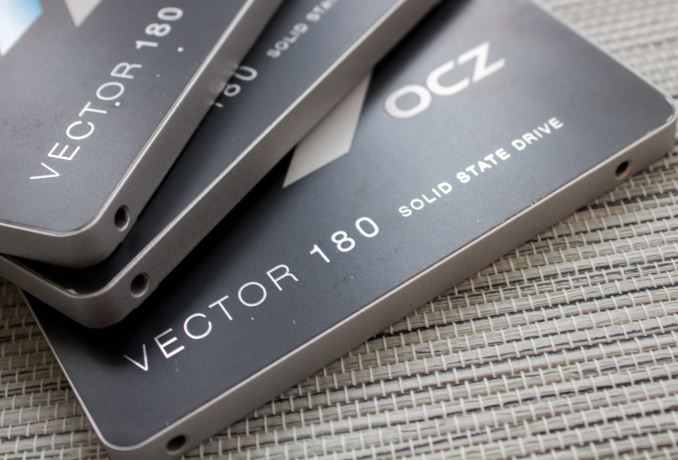
OCZ has been teasing the Vector 180 for quite some time now. The first hint of the drive was unveiled over nine months ago at Computex 2014 where OCZ displayed a Vector SSD with power loss protection, but the concept of 'full power loss protection for the enterprise segment' as it existed back then never made it to the market. Instead, OCZ decided to partially use the concept and apply it to its new flagship client drive that is also known as the Vector 180.
OCZ calls the power loss protection feature in Vector 180 'Power Failure Management Plus', or PFM+ for short. For cost reasons, OCZ didn't go with full power loss protection similar to enterprise SSDs and hence PFM+ is limited to offering protection for data-at-rest. In other words, PFM+ will protect data that has already been written to the NAND, but any and all user data that still sits in the DRAM buffer waiting to be written will be lost in case of a sudden power loss.
The purpose of PFM+ is to protect the mapping table and reduce the risk of bricking due to a sudden power loss. Since the mapping table is stored in the DRAM for faster access, all SSDs without some sort of power loss protection are inherently vulnerable to mapping table corruption in case of a sudden power loss. In its other SSDs OCZ tries to protect the mapping table by frequently flushing the table from DRAM to NAND, but with higher capacities (like the 960GB) there's more metadata involved and thus more data at risk, which is why OCZ is introducing PFM+ to the Vector 180.
That said, while drive bricking due to mapping table corruption has always been a concern, I don't think it has been significant enough to warrant physical power loss protection for all client SSDs. It makes sense for the Vector 180 given it's high-end focus as professional users are less tolerant to downtime and it also grants OCZ some differentiation in the highly competitive client market.
Aside from PFM+, the other new thing OCZ is bringing to the market with the Vector 180 is a 960GB model. The higher capacity is enabled by the use of 128Gbit NAND, whereas in the past OCZ has only used a 64Gbit die in its products. It seems that Toshiba's switch to 128Gbit die has been rather slow as I have not seen too many products with 128Gbit Toshiba NAND - perhaps there have been some yield issues or maybe Toshiba's partners are just more willing to use the 64Gbit die for performance reasons (you always lose some performance with a higher capacity die due to reduced parallelism).
| OCZ Vector 180 Specifications | ||||||
| Capacity | 120GB | 240GB | 480GB | 960GB | ||
| Controller | OCZ Barefoot 3 M00 | |||||
| NAND | Toshiba A19nm MLC | |||||
| NAND Density | 64Gbit per Die | 128Gbit per Die | ||||
| DRAM Cache | 512MB | 1GB | ||||
| Sequential Read | 550MB/s | 550MB/s | 550MB/s | 550MB/s | ||
| Sequential Write | 450MB/s | 530MB/s | 530MB/s | 530MB/s | ||
| 4KB Random Read | 85K IOPS | 95K IOPS | 100K IOPS | 100K IOPS | ||
| 4KB Random Write | 90K IOPS | 90K IOPS | 95K IOPS | 95K IOPS | ||
| Steady-State 4KB Random Write | 12K IOPS | 20K IOPS | 23K IOPS | 20K IOPS | ||
| Idle Power | 0.85W | |||||
| Max Power | 3.7W | |||||
| Encryption | AES-256 | |||||
| Endurance | 50GB/day for 5 years | |||||
| Warranty | Five years | |||||
| MSRP | $90 | $150 | $275 | $500 | ||
The retail package includes a 3.5" desktop adapter and a license for Acronis True Image HD 2013 cloning software. Like some of OCZ's recent SSDs, the Vector 180 includes a 5-year ShieldPlus Warranty.
OCZ has two flavors of the Barefoot 3 controller and obviously the Vector 180 is using the faster M00 bin, which runs at 397MHz (whereas the M10 as used in the ARC 100 and Vertex 460(a) is clocked at 352MHz).
OCZ's other SSDs have already made the switch to Toshiba's latest A19nm MLC and with the Vector 180 the Vector series is the last one to make that jump. Given that the Vector lineup is OCZ's SATA 6Gbps flagship, it makes sense since NAND endurance and performance tend to increase as the process matures.
The Vector 180 review is the second that is based on our new 2015 SSD Suite and I suggest that you read the introduction article (i.e. the Samsung SM951 review) to get the full details. Due to several NDAs and travel, I unfortunately don't have too many drives as comparison points yet, but I'm running tests non-stop to add more drives for more accurate conclusions.
| AnandTech 2015 SSD Test System | |
| CPU | Intel Core i7-4770K running at 3.5GHz (Turbo & EIST enabled, C-states disabled) |
| Motherboard | ASUS Z97 Deluxe (BIOS 2205) |
| Chipset | Intel Z97 |
| Chipset Drivers | Intel 10.0.24+ Intel RST 13.2.4.1000 |
| Memory | Corsair Vengeance DDR3-1866 2x8GB (9-10-9-27 2T) |
| Graphics | Intel HD Graphics 4600 |
| Graphics Drivers | 15.33.8.64.3345 |
| Desktop Resolution | 1920 x 1080 |
| OS | Windows 8.1 x64 |
- Thanks to Intel for the Core i7-4770K CPU
- Thanks to ASUS for the Z97 Deluxe motherboard
- Thanks to Corsair for the Vengeance 16GB DDR3-1866 DRAM kit, RM750 power supply, Hydro H60 CPU cooler and Carbide 330R case


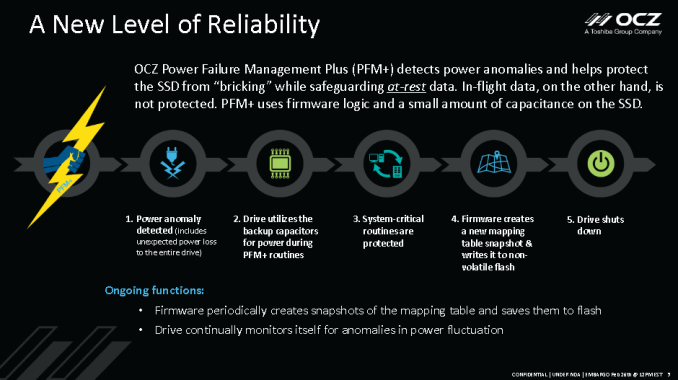
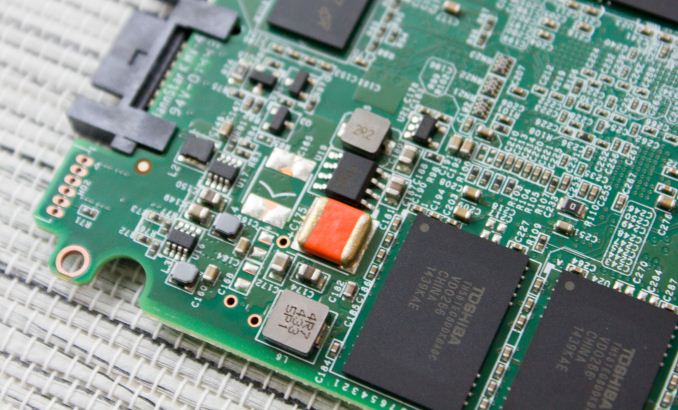
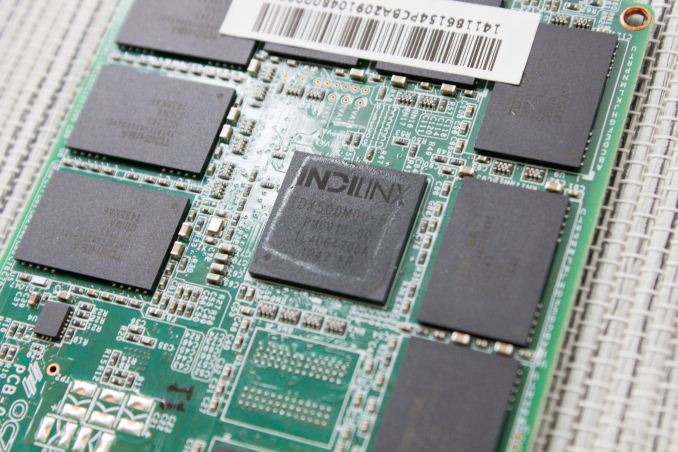
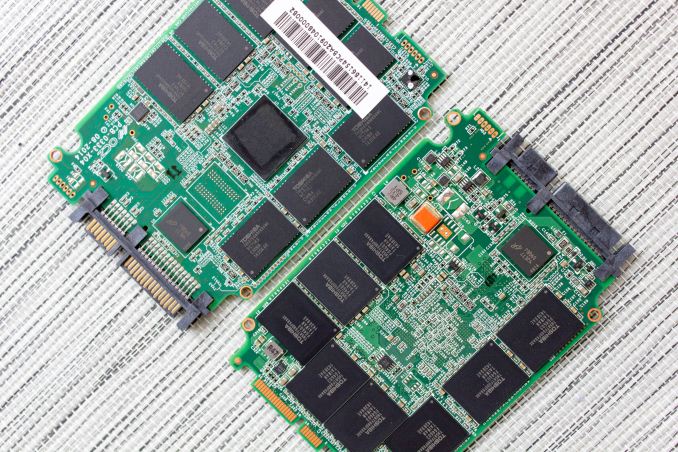








89 Comments
View All Comments
LB-ID - Thursday, March 26, 2015 - link
Looks like an overpriced product that doesn't stack up against competition in the same price range. Given OCZ's extensive track record of failures and attempts to use their user base as unpaid beta testers I can understand their desire to include a feature to give more peace of mind, but in reality it's just not that useful and certainly insufficient to overcome years of accumulated ill will.serndipity - Thursday, March 26, 2015 - link
The specifications say it all.On a $, performance, reliability, endurance, warranty basis, the OCZ 180 falls significantly short of even the consumer grade competition (e.g. Crucial or Samsung).
Unfortunately, the OCZ story when from deceiving investors, to customers, ending in bankruptcy.
Sadly, the same management etc., remains in place
Be smart and avoid OCZ
ocztosh - Monday, March 30, 2015 - link
Hi LB-ID, thank you for your feedback. We have shipped countless Barefoot 3 based drives across multiple series products and never once had to rev silicon. We have made updates to firmware to continually improve our products. The addition of the PFM+ feature was a decision to support customers that are really on the edge of enthusiast and workstation. This is a required feature for many enterprise drives and we felt there was a value to including this feature into our Vector 180 Series. We agree that not every customer necessarily needs this feature, and for those customers across the client spectrum we have other BF3 based drives that do not include the additional circuitry, but for those customers that really would like that extra layer of protection we were able to integrate this feature without a price premium over our previous Vector 150 Series. We have already received a very positive response from some users but will continue to offer a range of drives to meet the needs of different user applications.voicequal - Friday, March 27, 2015 - link
Wow, great review and a ton of new tests and data. The bathtub curve on the mixed sequential read/write performance will be very interesting to compare to forthcoming NVMe drives. I was surprised by how much the IOPS were reduced by commingling of sequential reads/writes. Seems to be room for improvement in this area.Ethos Evoss - Saturday, March 28, 2015 - link
The worst company of SSD's some OCZ or OWC or PVC .. jeez trash.. it's been sold to toshiba anyway ..ocztosh - Monday, March 30, 2015 - link
Hello Ethos Evoss. We are sorry that you feel this way and/or if you had a negative experience in the past. We are indeed now part of Toshiba and OCZ Storage Solutions is a very different organization as a subsidiary of Toshiba. Toshiba has provided the ability to vastly enhance resources for product development as well as given us complete access to their premium NAND. We certainly will continue to strive to meet the high expectations of you, our valued customers. Thank you again for your input.daerron - Tuesday, May 26, 2015 - link
Nice in depth analysis Anandtech! Read the article as I'm receiving a new Vector 180 240GB drive this week as my original Vector bricked itself earlier this month after around 2 years of service. I have to say that I'm really impressed with OCZ's customer service as I couriered the drive last week and will be receiving a brand new and latest SSD in return this week. Fortunately I had my data backed up as it really just died without any warning. Based on the analysis I was also thinking this would be a killer laptop drive, till I saw the lack of slumber support which is a bit of a disappointment and opportunity missed. Still the PFM+ and low power usage is also most welcome in my workstation PC. We have regular power cuts in my country so its great to have that extra peace of mind.bogdan_kr - Thursday, December 17, 2015 - link
Hello guys. I would like to ask how exactly this Storage Bench - Light is designed. The description says it is designed to be an accurate illustration of basic usage with Total IO Operations 832,339, Total GB Read 17.97 and Total GB Written 23.25.With its 23 GB of writes it should account for roughly two or three days of average usage (i.e. 7-11GB per day).
How long (typically) does it take to finish this bench?
Is it designed to last for few hours (which would account for a typical daily use) or is it designed to finish as fast as possible, in few minutes perhaps?
bogdan_kr - Saturday, January 23, 2016 - link
I am aware that most likely it is a rhetorical question but can anyone from AnandTech answer it, please? I just wanted to be sure about that benchmark.